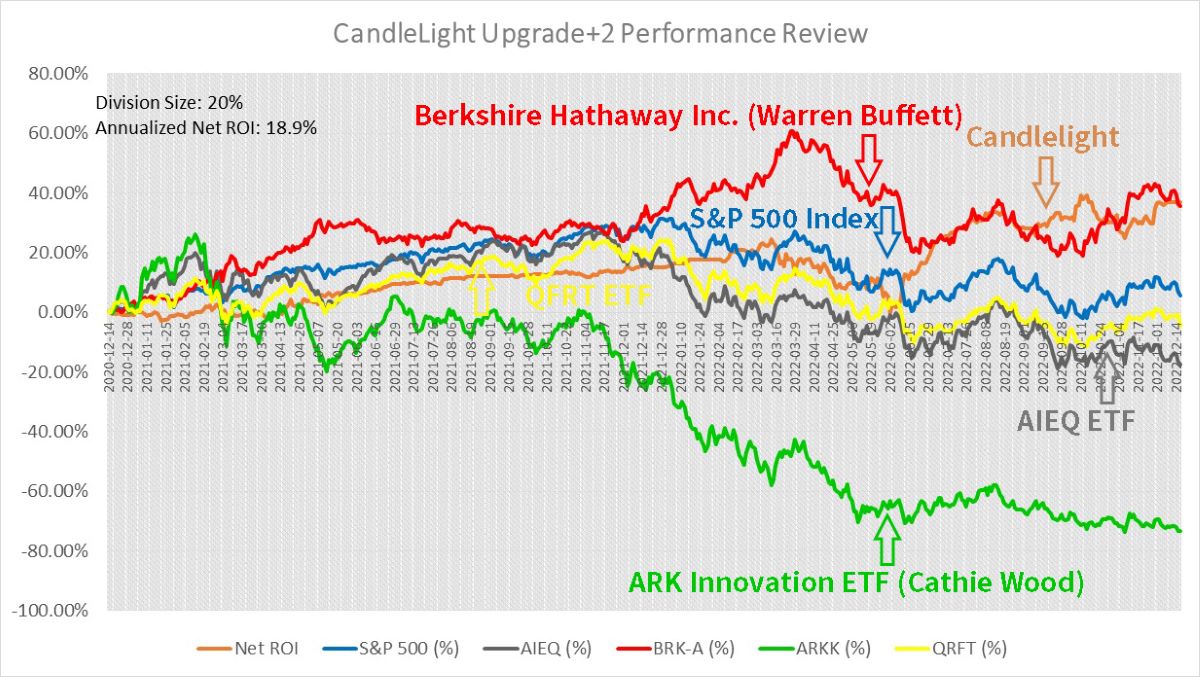Unleashing the Power of Algorithmic Trading: The Future of Stock Market
|
|
Have you ever heard of a robot who is better at stock trading than a human?
No, it’s not a scene from a sci-fi movie, it’s a reality known as
algorithmic trading.
Imagine having a trading buddy who never takes a
coffee break, never complains about working overtime, and never gets a
headache from staring at a screen for hours. That’s the beauty of
algorithmic trading!
Algorithmic trading, also known as automated
trading or algo trading, is a method of executing trades using computer
algorithms. These algorithms use mathematical models and statistical
analysis to make decisions on buying and selling financial instruments such
as stocks, bonds, and commodities. The rise of algorithmic trading has
dramatically changed the financial landscape, offering many benefits over
traditional manual trading methods. Here, we’ll explore the basics of
algorithmic trading and some of the key benefits it offers, along with
examples to illustrate each benefit.
What is Algorithmic Trading?
Algorithmic trading involves using complex mathematical models and
statistical analysis to make informed decisions about buying and selling
financial instruments. These algorithms take into account a wide range of
market data, including current market trends, price movements, and news
events. The algorithms are designed to automatically execute trades based on
pre-defined criteria, such as price movements, market volatility, and other
key indicators. This allows for quick and efficient execution of trades, as
well as the ability to make decisions based on real-time data.
For
example, a trader can use an algorithmic trading strategy that buys stocks
when their price drops below a certain level and sells when the price rises
above a certain level. The algorithm will continuously monitor the stock
prices and execute trades automatically, without the need for manual
intervention.
“If you don’t find a way to make money while you sleep,
you will work until you die.” — Warren Buffett
Benefits of
Algorithmic Trading
Increased Efficiency: Algorithmic trading allows
for the quick and efficient execution of trades, reducing the amount of time
and effort required to make decisions. This can be especially beneficial in
fast-moving markets where time is of the essence.
For example,
algorithmic trading algorithms can execute trades in milliseconds, much
faster than a human trader could do manually. This speed and efficiency can
be especially beneficial in markets where prices can fluctuate rapidly, such
as the cryptocurrency market.
2. Reduced Emotions: Algorithmic
trading eliminates the need for human intervention, reducing the influence
of emotions on trading decisions. This can lead to more consistent and
rational decision-making, reducing the risk of emotional-based mistakes.
For instance, a trader who is feeling anxious about a particular stock
might make an impulsive decision to sell, even if it is not the right move.
With algorithmic trading, the algorithm will make decisions based on
pre-defined criteria, eliminating the risk of emotional-based mistakes.
3. Improved Accuracy: Algorithmic trading algorithms use complex
mathematical models and statistical analysis to make decisions, reducing the
risk of human error. This leads to improved accuracy and consistency, which
can lead to better returns in the long-term.
For example, algorithmic
trading algorithms can continuously analyze market data and execute trades
based on real-time market trends, reducing the risk of human error and
leading to improved accuracy.
4. Increased Speed: Algorithmic trading
algorithms can process large amounts of data in real-time, making decisions
and executing trades much faster than manual methods. This can provide a
significant advantage in fast-moving markets.
For instance,
algorithmic trading algorithms can process news and market data as it
becomes available, making decisions and executing trades in real-time. This
speed and efficiency can provide a significant advantage in fast-moving
markets where prices can fluctuate rapidly.
5. Backtesting:
Algorithmic trading allows traders to test their strategies using historical
market data, allowing them to identify and optimize the best algorithms.
This leads to more informed and confident trading decisions.
For
example, a trader can use historical market data to test different
algorithmic trading strategies and see which ones have performed the best.
This can help the trader identify the best algorithms to use for future
trades and make more informed and confident trading decisions.
Another one, after months and months forward testing, Candlelight’s Growth
Rate is neck and neck with Buffett’s performance, decisions 100% made by
machines, details: Two Years, 100+
Sets of Testing Results Confirm: Machines Can Beat Human Aces in Stock
Market!

6. Cost-Effective: Algorithmic trading can be cost-effective compared to
traditional manual methods, as it eliminates the need for human traders and
reduces the cost of executing trades. This can be especially beneficial for
small traders and investors who may not have the resources to employ a large
trading team.
For instance, an individual investor can use
algorithmic trading algorithms to execute trades at a fraction of the cost
of hiring a professional trader. This can provide a cost-effective solution
for small traders and investors who want to take advantage of the benefits
of algorithmic trading.
7. Scalability: Algorithmic trading allows
traders to execute trades on a large scale, making it possible to execute a
large number of trades simultaneously. This can be especially beneficial in
fast-moving markets where the ability to execute trades quickly is critical.
For example, a hedge fund can use algorithmic trading algorithms to
execute a large number of trades simultaneously, taking advantage of market
fluctuations and maximizing returns.
8. Better Risk Management:
Algorithmic trading algorithms can help traders manage risk more
effectively, by automatically executing trades based on pre-defined criteria
and market conditions. This can help traders reduce their exposure to market
volatility and minimize losses.
For instance, an algorithmic trading
algorithm can automatically sell a stock if the price falls below a certain
level, reducing the trader’s exposure to market volatility and minimizing
losses.
“Change will not come if we wait for some other person or
some other time. We are the ones we’ve been waiting for. We are the change
that we seek.” — Barack Obama
Algorithmic trading offers many
benefits over traditional manual methods, including increased efficiency,
reduced emotions, improved accuracy, increased speed, backtesting,
cost-effectiveness, scalability, and better risk management. These benefits
have led to the widespread adoption of algorithmic trading in the financial
industry and made it a popular choice for traders and investors of all
sizes.
Gone are the days when traders had to rely on intuition, gut
feeling, and good luck to make a profit. With algorithmic trading, the
computer does the heavy lifting, leaving the trader to sip cocktails on a
beach.
So, whether you’re a seasoned trader looking to improve your
game or a novice looking to break into the world of trading, algorithmic
trading may just be the solution you’ve been searching for. It’s time to say
goodbye to the stress and hello to the profits with the power of algorithmic
trading!
“I choose a lazy person to do a hard job. Because a lazy
person will find an easy way to do it.” — Bill Gates
PS.
Two Years, 100+ Sets of Testing
Results Confirm: Machines Can Beat Human Aces in Stock Market! |


|

Free Tutorial
Share
|
|
|
|